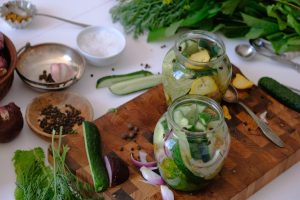Exploring the World of Molecular Gastronomy Techniques
Molecular gastronomy is a term that has gained popularity in the culinary world in recent years. It refers to the scientific approach of cooking, combining physics, chemistry, and food to create innovative dishes. Chefs all over the world have been experimenting with molecular gastronomy techniques to add new dimensions to traditional dishes and create unique flavor combinations.
The Basics of Molecular Gastronomy
Before we dive into the world of molecular gastronomy techniques, let’s understand what it is all about. Simply put, it is the science behind cooking. Molecular gastronomy looks at the chemical reactions that occur between different ingredients when they are cooked and how these reactions can be manipulated to create new tastes, textures, and presentations. It is the perfect blend of science and artistry, resulting in a feast for both the eyes and taste buds.
The Origins of Molecular Gastronomy
Molecular gastronomy has its roots in France, where chemist Hervé This and physicist Nicholas Kurti first coined the term in the 1990s. They were intrigued by the idea of exploring the science behind traditional cooking techniques. Since then, it has gained popularity among chefs all over the world, with many renowned restaurants incorporating molecular gastronomy into their menus.
The Techniques of Molecular Gastronomy
One of the defining characteristics of molecular gastronomy is its use of science-based tools and techniques. Some of the commonly used techniques include:
sous vide, spherification, and foams.
Sous vide is a cooking technique where food is placed in an airtight bag and cooked at a precisely controlled temperature in a water bath. It allows for even cooking and retains the natural flavors and nutrients of the food. Spherification is a technique that turns liquid into edible spheres that burst with flavor when consumed. It is often used to create caviar-like pearls using different ingredients. Foams, on the other hand, are created by blending ingredients with a gas, resulting in a light and airy texture. These techniques have opened up a whole new world of possibilities in the culinary world, allowing chefs to push the boundaries of traditional cooking.
The Impact of Molecular Gastronomy
Molecular gastronomy has not only revolutionized the way we cook and eat but has also had a significant impact on the food industry. The use of science-based techniques has allowed chefs to create dishes that are visually stunning and have complex flavors and textures. It has also opened up new avenues for food presentation, allowing chefs to curate a unique and memorable dining experience for their customers.
The Future of Molecular Gastronomy
The future of molecular gastronomy looks promising, with more and more chefs and restaurants incorporating science into their cooking. It has also sparked a new wave of creativity and experimentation among home cooks, with many trying their hand at creating molecular gastronomy dishes in their own kitchens. With advancements in technology and constant innovation, we can only imagine the endless possibilities that lie ahead in the world of molecular gastronomy.
In Conclusion
As we have explored the world of molecular gastronomy techniques, it is clear that it has become an exciting and essential aspect of the culinary world. It has not only transformed the way we cook and eat but has also allowed for endless opportunities for innovation and creativity. Whether you are a professional chef or a home cook, it is an exciting world to explore, and who knows, you might just discover your next favorite dish through the magic of molecular gastronomy.









